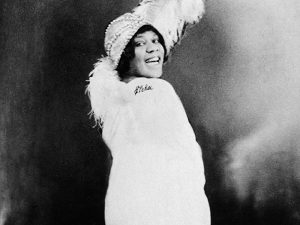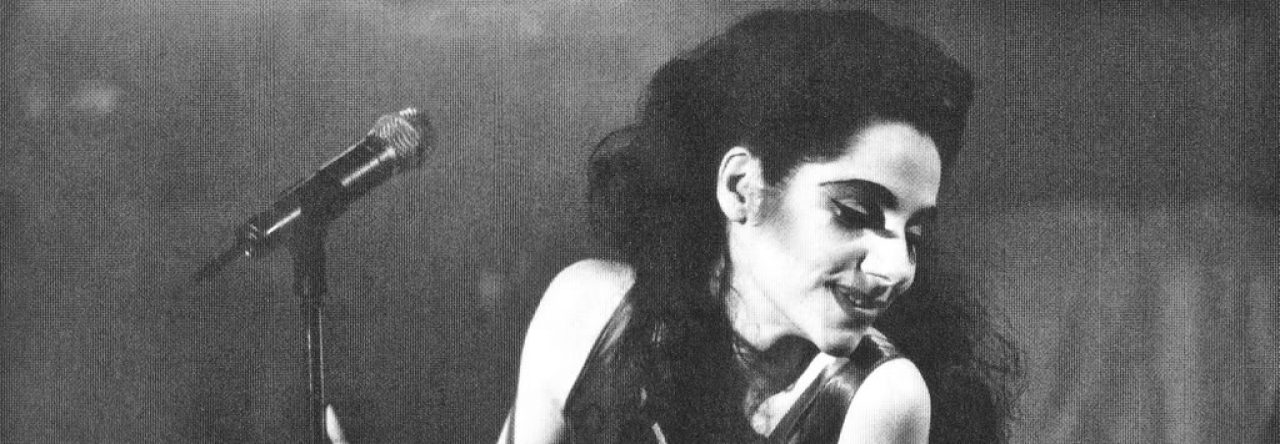It is evident when listening to PJ Harvey that she has been influenced by blues artists in her delivery of vibrato vocals, as well as minor chord instrumentation. However her vocal delivery is unique in the way that she puts her own alternative rock twist on songs that seem to be rooted in blues elements. Bessie Smith, crowned the “Empress of Blues” was an instrumental female figure to Vaudeville, the blues movement, and paved the way for the jazz movement that would follow her. She is unique in what she brought to blues, which was an understanding of the desire of the woman. Bessie Smith was an artist whose music seemed to be representative to the blues era she was deeply apart of, but also a nod to the future jazz era that would come next. Her vocals tend to have the common “out-and-out blue third”, but would rhythmically combine with “Smith’s vertical approach” to music causing there to be a fusing of the two genres (Friedwald 6). However the most impactful and memorable aspect of Bessie Smith was what she was singing about. As Friedwald states in his book Jazz Singing, “Smith sings with a quality of harshness and at the same time with a great passion but never with irony or sarcasm” (6). Her vocals are honest, and she sings about topics such as love and sex without any guilt or remorse. The nature in which she presented herself, as a three dimensional artist, was something that was rare at the time, as many artists were not able to individualize themselves in the tin pan alley era.

“The Empress of Blues” was Bessie Smith’s title as she influenced the blues world heavily with her vocal skill and musical talent.
PJ Harvey is similar in vocal style to Bessie Smith in the way that she uses vibrato vocals on the album To Give You My Love in order to portray the extent and severity of the emotions that she feels. Along with this there is also a clear influence in the topics that are discussed by both female vocalists. Female blues artists were known for being extremely expressive in their sexuality and desire. As Davis defines in her book Blues Legacies and Black Feminism, “One of the most obvious ways in which blues lyrics deviated from that era’s established popular musical culture was their provocative and pervasive sexual imagery” (3). The ability to portray oneself as a sexual being, was also linked with the recent emancipation of slaves. For those who were emancipated, sexuality itself was a way to express freedom, as sex had been controlled by slave owners to dehumanize slaves and treat them as livestock, sex was only seen as a means to create profit and more slaves. Therefore blues singers such as Bessie Smith played an integral role in allowing African Americans to express themselves in a manner that was humanizing. PJ Harvey uses sexuality in a different manner but one that again is influenced in the honest and true nature of Smith and her vocal lyrics, which are laden with the true sorrows of being left by a man that she loved, or the desire that she holds for another.
Even though To Bring You My Love holds many elements of blues, it also uses them in a way that is revolutionary for the genre. Not only does Harvey combine the blues genre with gothic elements of 90’s alternative rock, through heavy synth organs and whiny vocals, and classical instruments such as violins, she discusses motherhood quite often which is a topic that is off the table for blues female artists. Davis states, “The absence of the mother figure in the blues does not imply a rejection of motherhood as such, but rather suggests that blues women found the mainstream cult of motherhood irrelevant to the realities of their lives” (13). Despite this, To Bring You My Love is filled with references to motherhood and the ways in women are irrevocably linked to the men who are the fathers of their children. She uses these blues elements to darken the tones of her songs, such as the bass heavy, synthesizer organ sound on “Down By the Water”, in which she depicts a mother drowning her daughter. The culmination of blues elements in this album allow Harvey to explore a side of motherhood, and the female narrative of gender in a way that was not typical for the genre.


